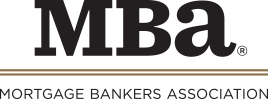
Existing Home Sales Stumble Again
Existing home sales fell for the fourth time in five months in August as low inventories continued to constrain overall activity, the National Association of Realtors reported yesterday.
NAR said total existing home sales fell by 1.7 percent to a seasonally adjusted annual rate of 5.35 million in August from 5.44 million in July. Last month’s sales pace is 0.2 percent higher from a year ago. Single-family home sales decreased by 2.1 percent to 4.74 million in August from 4.84 million in July, but rose by 0.4 percent from the 4.72 million pace a year ago. The median existing single-family home price rose to $255,500 in August, up 5.6 percent from a year ago. Existing condominium and co-op sales rose by 1.7 percent to 610,000 units in August, but fell by 1.6 percent from a year ago. The median existing condo price rose to $237,600 in August, 5.4 percent higher than a year ago.
Regionally, declines in the South and West canceled out gains in the Northeast and Midwest. Sales in the South decreased by 5.7 percent to an annual rate of 2.15 million in August and fell by 0.9 percent from a year ago. The median price in the South rose to $220,400, up 5.4 percent from a year ago. Sales in the West fell by 4.8 percent to an annual rate of 1.20 million in August, but improved by 0.8 percent above a year ago. The median price in the West rose to $374,700, up 7.7 percent from a year ago.
Sales in the Northeast jumped by nearly 11 percent to an annual rate of 720,000 and improved by 1.4 percent from a year ago. The median price in the Northeast rose to $289,500, 5.6 percent higher than a year ago. In the Midwest, sales rose by 2.4 percent to 1.28 million in August and bu 0.8 percent from a year ago. The median price in the Midwest rose to $200,500, up 5.0 percent from a year ago.
“Demand remains strong but a lack of homes available for sale continues to restrain sales,” said Mark Vitner, senior economist with Wells Fargo Securities, Charlotte, N.C. “This is the fourth decline in the past five months and is the slowest pace of sales since August 2016.”
Vitner noted, however, that price appreciation moderated somewhat, with the median price up 5.6 percent year-to-year compared to 6.2 percent in July. “The moderation is due to an increase in sales of lower-priced homes,” he said.
NAR Chief Economist Lawrence Yun said the slump in existing sales stretched into August despite what remains a solid level of demand for buying a home. “Steady employment gains, slowly rising incomes and lower mortgage rates generated sustained buyer interest all summer long, but unfortunately, not more home sales,” he said. “What’s ailing the housing market and continues to weigh on overall sales is the inadequate levels of available inventory and the upward pressure it’s putting on prices in several parts of the country. Sales have been unable to break out because there are simply not enough homes for sale.”
Yun attributed the South region’s decline in closings in some part to devastation Hurricane Harvey caused to the greater Houston area. “Sales will be impacted the rest of the year in Houston, as well as in the most severely affected areas in Florida from Hurricane Irma,” he said. “However, nearly all of the lost activity will likely show up in 2018.”
Cheryl Young, senior economist with Trulia, San Francisco, said while the full extent of damage wreaked by Hurricanes Harvey and Irma are not yet known, combined with severely low inventory and steadily increasing prices, existing home sales are likely to be negatively impacted by these natural disasters. “The South accounted for 41 percent of existing home sales in 2016 and through August was on pace to constitute more than 40 percent of existing home sales this year,” she said.
NAR said the median existing-home price for all housing types in August rose to $253,500, up 5.6 percent from a year ago ($240,000), marking the 66th straight month of year-over-year gains. Total housing inventory at the end of August declined by 2.1 percent to 1.88 million existing homes available for sale, 6.5 percent lower than a year ago (2.01 million). Inventory has fallen year over year for 27 consecutive months. Unsold inventory is at a 4.2-month supply at the current sales pace, down from 4.5 months a year ago.
The report said properties typically stayed on the market for 30 days in August, unchanged from July and down from 36 days a year ago. Fifty-one percent of homes sold in August were on the market for less than a month.
First-time buyers represented 31 percent of sales in August, down from 33 percent in July and the lowest share since last August (also 31 percent). All-cash sales totaled 20 percent of transactions in August, up from 19 percent in July but down from 22 percent a year ago. Individual investors purchased 15 percent of homes in August, up from 13 percent in July and 12 percent a year ago.
Distressed sales represented 4 percent of sales in August, down from 5 percent both in July and a year ago. Three percent of August sales were foreclosures; 1 percent were short sales.
